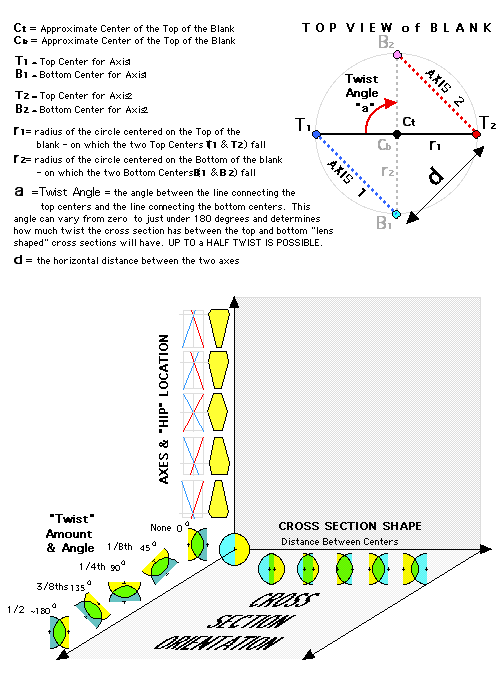With the basic concepts or multi axes arcs turning, virtual 3D models you've played with and a method for laying out your centers it's time to explain What Does What - the link between EFFECT & CAUSE. With these final pieces, you should be able to begin DESIGNING a piece and understand how to turn it.
The first illustration is a cleaned up version of Peter Rand's "rooster scratches diagram" for Four Centers, Two Axes. Two Arcs TWISTING, a result of a two week e-mail exchange collaboration with Peter and Barbara Dill (the person who got me into all this to begin with). This annotated diagram shows the variables you have to play with.
The second illustration shows the link between those parameters and the resulting outcome
- the shape of the cross section
- the change in that cross section orientation between the top and bottom of the blank
- where the widest part of the piece (the "hip") will be based on how you orient the two axes relative to each other
Download this image, print it,study it and keep it as a handy reference.
